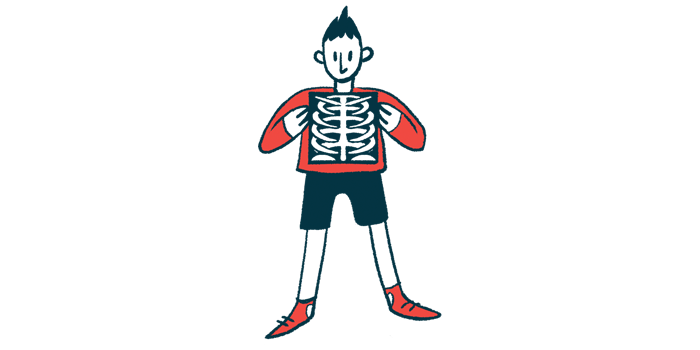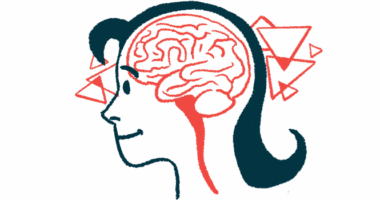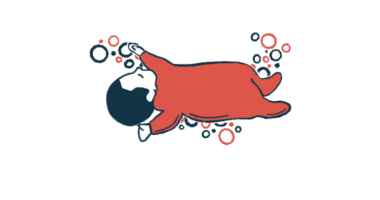Specially designed back brace helps ease scoliosis in SMA children
Used with daily physical therapy, TLSO leads to greater gains over 8 weeks

Using a specially designed back brace in addition to taking part in physical therapy may work best to reduce abnormal spine curvature, or scoliosis, in children with spinal muscular atrophy (SMA) type 1, a new study from Turkey reports.
During eight weeks of daily physical therapy, which included exercises to improve trunk strength, the children’s scoliosis eased and their motor function improved. However, in this small clinical trial, these gains were greater in children who also wore the back brace, called a thoracolumbosacral orthosis, or TLSO for short.
“These findings highlight the clinical value of a multidisciplinary early intervention approach that includes spinal mobilization, trunk strengthening, and pulmonary exercise components for the effective management of scoliosis in children with type 1 SMA,” the researchers wrote.
The team said using a combination of treatments “yields superior clinical outcomes in children with type 1 SMA.” But they noted that incorporating the back brace, specifically, “exhibited a greater effect … across all assessment parameters.”
The study, titled “The effect of thoracolumbosacral orthosis on scoliosis progression and chest deformity in children with type 1 spinal muscular atrophy: A randomized controlled trial,” was published in the journal PLOS ONE.
SMA is a genetic condition in which muscles become weak and waste away. In SMA type 1, the most common form of the disease, treatment advances in recent years have extended survival and eased symptoms among patients, who typically have signs of muscle weakness or wasting that are apparent at birth or develop within the first six months of life.
“As these patients live longer, scoliosis and chest deformities have emerged as prevalent complications in the later stages of life,” the researchers wrote.
Little data available on using braces for SMA type 1 children with scoliosis
Spinal orthoses — medical devices designed to support and immobilize the spine — have been recommended as a way to help manage moderate or severe scoliosis. Little data are available about their use in SMA patients, however. Further, “no study has specifically investigated the combined application of TLSO and trunk exercises in children with type 1 SMA,” the scientists wrote.
To assess this, the researchers conducted a clinical trial (NCT05878418) that involved 20 youngsters, with a mean age of about 48 months, or 4 years. The child had moderate scoliosis, as determined by Cobb angle, an X-ray measurement of a spinal curve. In these children, that measurement was 20-40 degrees.
After random assignment, 10 underwent physical therapy alone, and 10 received a customized TLSO in addition to that treatment. All of the children had received Spinraza (nusinersen) before the gene therapy Zolgensma (onasemnogene abeparvovec-xioi).
“For children diagnosed with type 1 SMA and referred to our outpatient clinic, routine pulmonary rehabilitation … was tailored to individual needs following a specialist physician’s clinical assessment,” the team wrote. Their regimen included exercises to strengthen the trunk, as well as pulmonary care approaches, such as a bilevel positive airway pressure (BiPAP) device to help breathe, and cough assist devices.
The parents of the participants received training on the therapy routine, designed to be a home-based program done seven days a week, with each session lasting 50-60 minutes, or a maximum of one hour.
In the TLSO group, participants wore the back brace for eight to 12 hours daily. Each individual’s TLSO included a window in the front to allow for easier breathing. Foam padding and other design considerations were intended to support the children’s comfort.
The researchers performed X-rays of the spine before and after eight weeks of therapy. Both groups showed significant decreases in the Cobb angle after the trial, suggesting eased scoliosis.
Motor function scores on the Children’s Hospital of Philadelphia Infant Test of Neuromuscular Disorders (CHOP INTEND) scale also increased across groups.
Benefits greater for children wearing back brace and getting therapy
For each of these changes, the effects were significantly larger for the children who wore a TLSO. Mean spine curvature decreased by 1.3 degrees among participants in the physical therapy group, compared with 4.1 degrees in the TLSO group. The increase in CHOP INTEND scores was twice as large in the TLSO group (3.4 points vs. 1.7 points).
Parents of children who wore a TLSO gave the device an average rating of 4.53 out of 5.
“These findings suggest that, beyond its potential role in scoliosis management, the orthosis was generally well tolerated by the pediatric patient group included in the study,” the researchers wrote.
The findings support current recommendations for TLSO [back brace] use in patients with … [moderate to severe scoliosis], and emphasize the potential benefits of early, proactive orthotic intervention when integrated with mobilization, trunk, and pulmonary exercise programs in managing scoliosis in this population.
Overall, according to the team, “the findings support current recommendations for TLSO use in patients with a Cobb angle [greater than 20 degrees, indicating moderate to severe scoliosis], and emphasize the potential benefits of early, proactive orthotic intervention when integrated with mobilization, trunk, and pulmonary exercise programs in managing scoliosis in this population.”
The scientists stressed, however, that “the improvements observed in this study should be interpreted as short-term outcomes,” noting the small number of patients involved and the short follow-up period.
“Future research should investigate the long-term impact of the [TLSO] intervention to confirm its sustained clinical benefits,” the team wrote.









